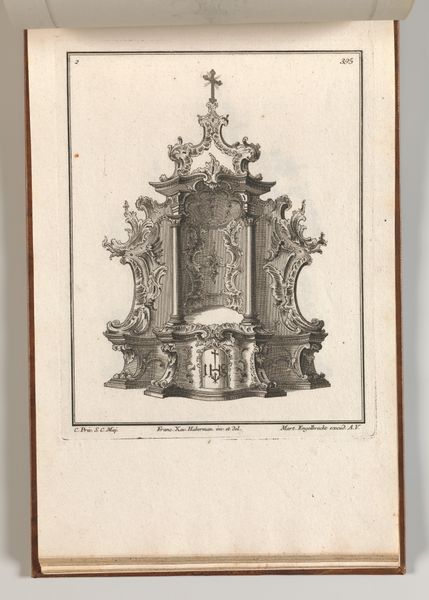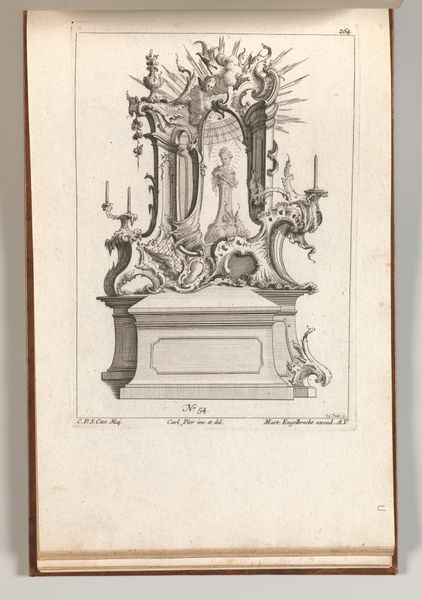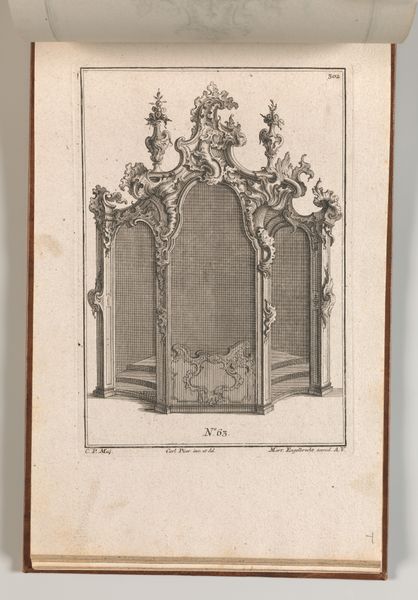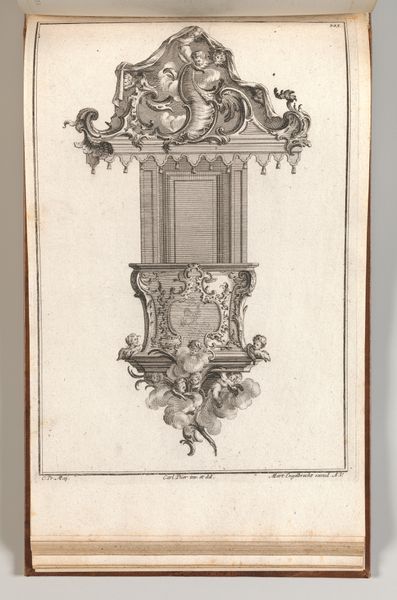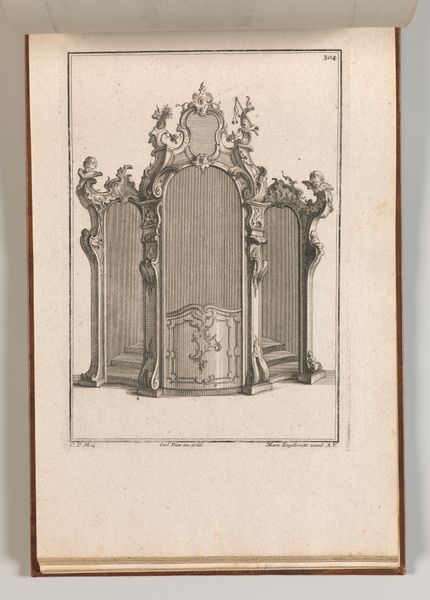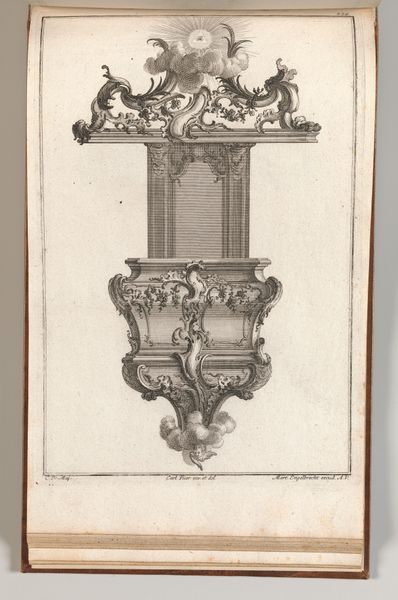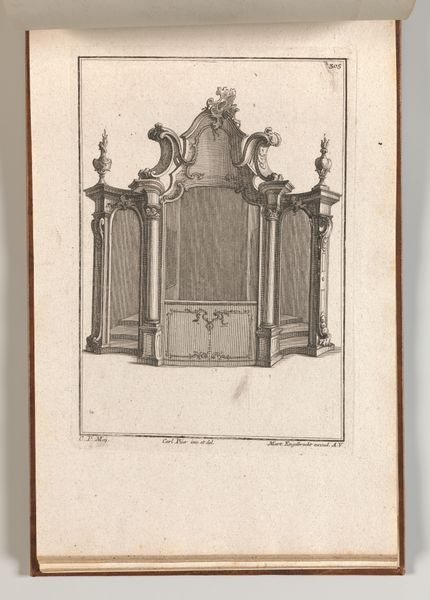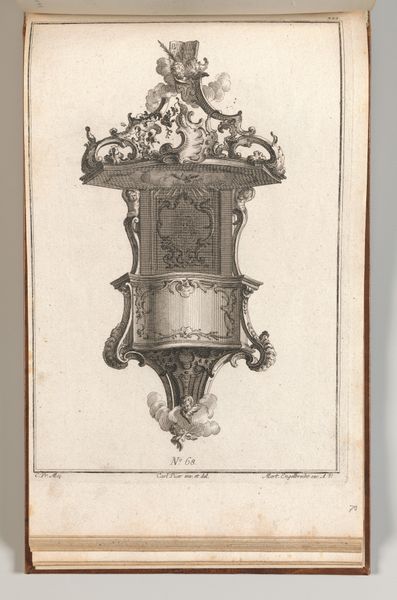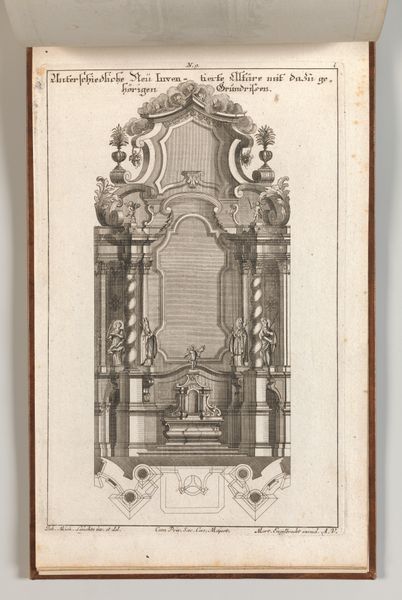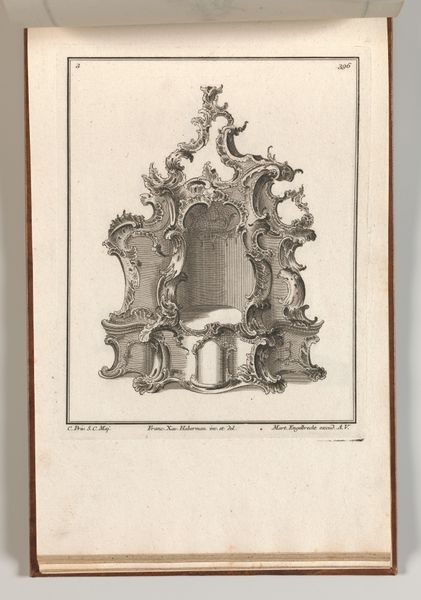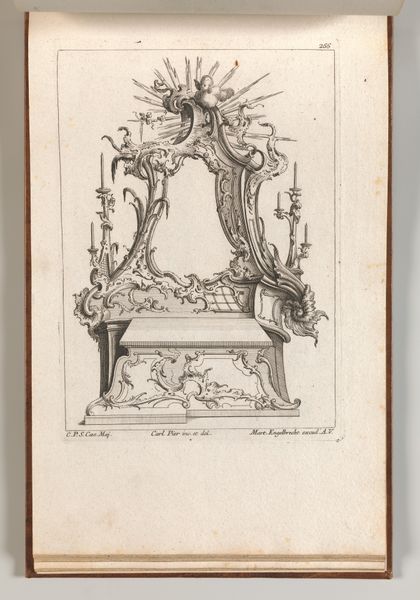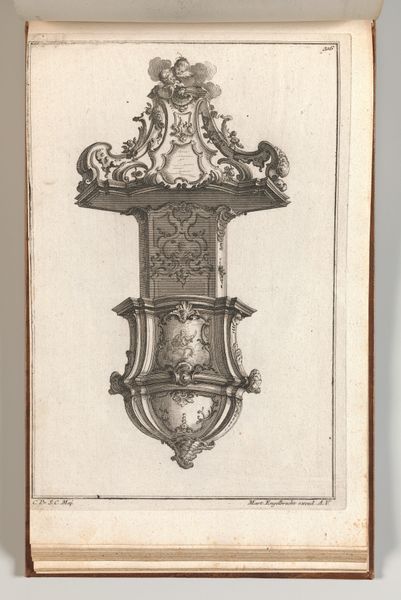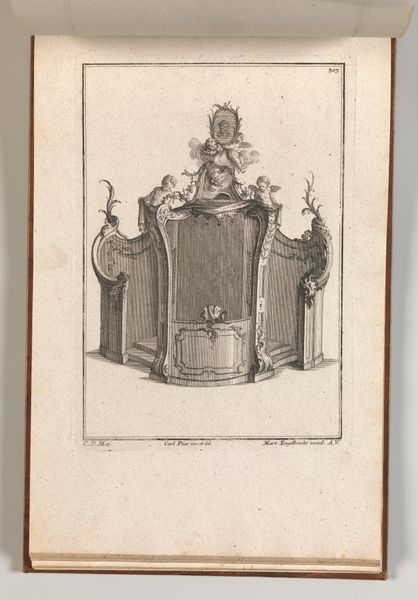
Design for a Tabernacle, Plate 1 from the series 'Tabernacle' 1745 - 1755
0:00
0:00
drawing, print, engraving
#
drawing
#
baroque
# print
#
engraving
Dimensions: Overall: 8 7/16 × 13 3/4 in. (21.5 × 35 cm)
Copyright: Public Domain
Curator: This is a design for a tabernacle, from a series also titled 'Tabernacle,' by Franz Xavier Habermann, dating roughly between 1745 and 1755. It’s an engraving. Editor: Oh, look at all that swirling! It's a Baroque cupcake stand for… well, not cupcakes. All that filigree and ornamentation; I'd be scared to dust it! Curator: The Baroque, as a style, really reveled in precisely this level of elaborate detail. Habermann wasn't alone in creating design prints for these elaborate furnishings and architectural elements; this print and others were part of a larger visual culture that dictated tastes. They were like architectural fashion magazines! Editor: I can imagine the competition! "Oh, you have THREE scrolls on your tabernacle? I have SIX!" I do appreciate how the stark lines of the engraving emphasize every little curve and flourish. What’s fascinating is how such extravagance served religious devotion. Curator: Precisely! The Baroque harnessed visual spectacle to inspire awe and piety. This particular design reflects the Counter-Reformation's emphasis on the Eucharist, using visual grandeur to elevate its importance. The design here provides us insight on religion but is also closely connected with political implications around this time, as the tabernacle design is not a sacred unique invention, it’s a design for potential clientele. Editor: So, less about quiet contemplation and more about theatrical impact? It’s interesting to imagine where something like this might live within the space, the presence it may have on a ceremony. The cross and bursts of light topping this design certainly adds to that! Curator: Yes, the placement of the tabernacle, which has shifted a bit, as well as all this over-the-topness is the Baroque response. To truly appreciate this, think about this engraving, disseminated in print, and compare that to how different religious views during the period utilized art to present their differing philosophies, if at all. Editor: Thanks, that context helped me find a certain perspective for this! A good reminder that what may seem like pure visual excess can also speak volumes about history and belief. Curator: Indeed. The print serves as a reminder of art’s ever-evolving relationship with power and piety.
Comments
No comments
Be the first to comment and join the conversation on the ultimate creative platform.
